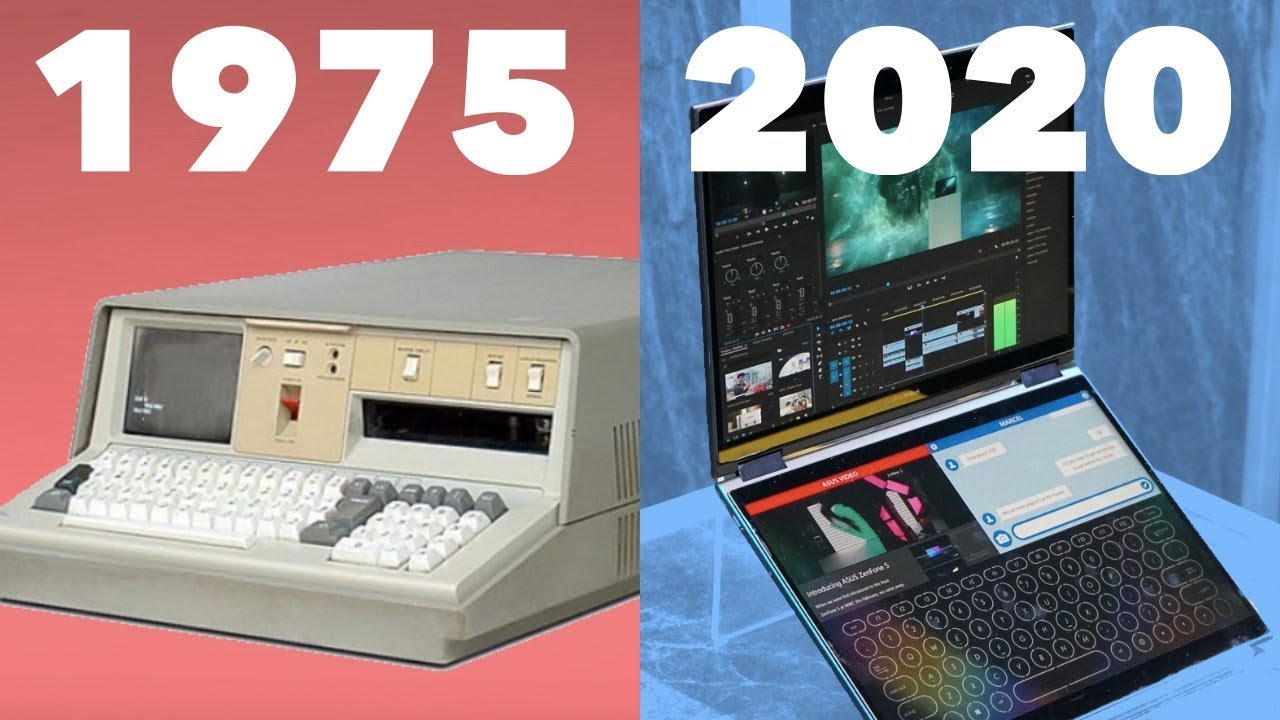Evolution of Laptops (Portable Computers) 1975 – 2020

Evolution of Laptops (Portable Computers) 1975 – 2020 #laptops #history #evolution #firstlaptop #computerhistory
The IBM 5100 was the first portable computer. . Here its shown powered on, and attached to an external monitor. Although weighing 55 pounds, it was much lighter and portable than previous computers.
The Xerox Note Taker was a bit more portable, and its keyboard folded out to reveal its screen. It employed what was then highly advanced technology, including 256 kB of RAM, and a 5 MHz Intel CPU.
Launched in April 1981. The Osborne 1 is recognized as the first laptop computer. It was the first commercially successful portable computer. Costing 18 hundred dollars, weighing 25 pounds, and shipping with a large bundle of software.
Later that year, Epson released a tiny battery powered portable computer, that traded screen size for convenience. It was hailed by BusinessWeek magazine as the, fourth revolution in personal computing.
The Grid Compass was the first portable computer that resembled our current laptops. Because of its high price and specialized application. It was mostly used by the US government. NASA used it on the Space Shuttle during the early 1980s, as it was both powerful and lightweight. And the special forces used them for their ruggedness, and use of solid state memory.
The TRS-80, sold through Radio Shack, was popular with journalists. They could type about 11 pages of text, and then transmit it for editing, using the built-in modem.
In 1984 the Commodore SX-64, was the first portable computer to feature a full-color display screen. It weighed about 20 pounds and sold for $995. It shipped with 64 kB of RAM and a 1 Mhz CPU. It did not sell particularly well, but became popular with user groups, and software developers. They could quickly pack, and unpack the machine, to use for copying software, or giving demonstrations.
The IBM PC Convertible, was the first laptop to use the 3?-inch floppy disk format. Which went on to become the industry standard. Like modern laptops, it featured power management. And the ability to run from batteries.
After the failure of their first laptop, Apple re-worked their concept, and released the PowerBook line in October 1991. They immediately caused a stir in the industry, with their dark grey cases, and the positioning of their pointing device.
In 1992, Olivetti developed and released the first laptop featuring a touchpad. The position near the base of the screen was the norm, as most applications were text based, and did not require a pointing device.
That same year, Olivetti released a smaller laptop. The Quadderno. Capable of audio recording, while the computer was off. And almost instant boot up. It shipped with a 16 Mhz CPU, 1MB of RAM, and 20MB of hard disk space.
The Concerto was the first convertible laptop. It had a detachable keyboard, pen, and touch screen. But the touch screen only worked with the special pen. Like today’s tablets, most of the electronics, were housed with the screen. This laptop was definitely ahead of its time!
The TC11 hundred had a very unique design. It was a hybrid laptop which included a touch-screen, Stylus, and tablet mode. Unfortunately, Windows XP was not a touch friendly OS, hampering its success. Like the Concerto, this was another laptop that was ahead of its time.
ASUS released the 7 0 1 in October 2007, which was the first netbook on the market. It featured a 7 inch screen, an Intel Celeron-M processor, and a 4 gigabyte hard disk.
The Yoga 13 was one of the first modern hybrid laptops, taking advantage, of Windows 8 touch interface. The name Yoga, is a reference to the units design, which allows four different configurations.
The Razer Blade was the first true portable gaming laptop. At .9 inches thin, and weighing 6.5 pounds, the Blade Pro was the most portable 17-inch gaming laptop in its class.
The Yoga Book hybrid laptop, brought even more functionality in 2016. By using a digitizer panel as the keyboard, the user was able to draw, write, and type on the same panel. The trade-off was, the lack of haptic feel and feedback, when in keyboard mode.
The 2018 version of the Yoga Book now uses e-ink for the keyboard panel. e-Ink allows for a more natural drawing surface, and for custom input entry layouts, depending on the application being used. And most importantly, it allows for reading, without wasting any battery, or having to carry a second device.
Asus is currently working on Project PreCog, which consists of a dual monitor laptop, similar to the Yoga Book, but without the limitations of e-Ink. Both could be used as monitors, by connecting an external keyboard. Or both monitors can be used for gaming, or for presentations. In laptop mode, one monitor is used normally, while the other is used as the keyboard, or control panel.








